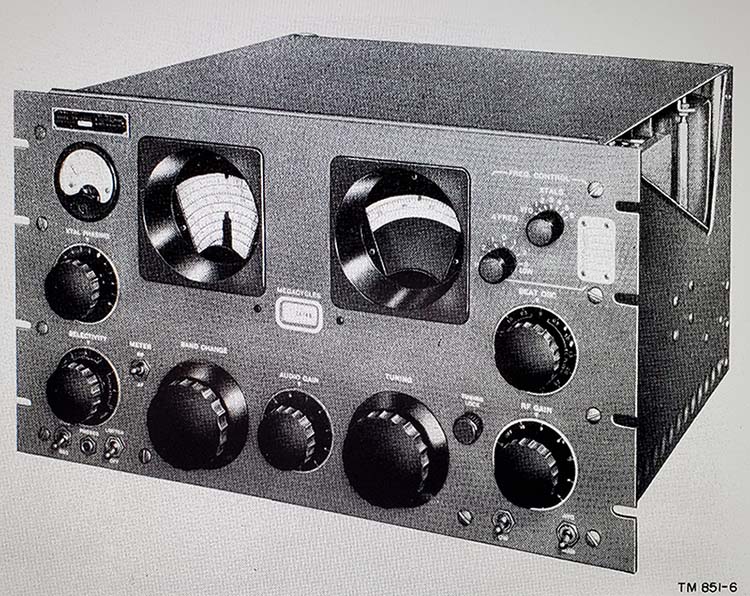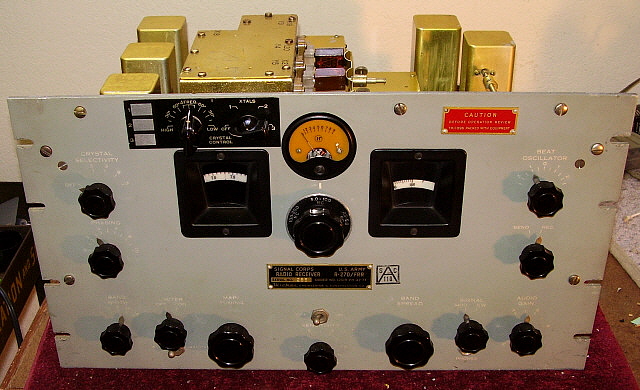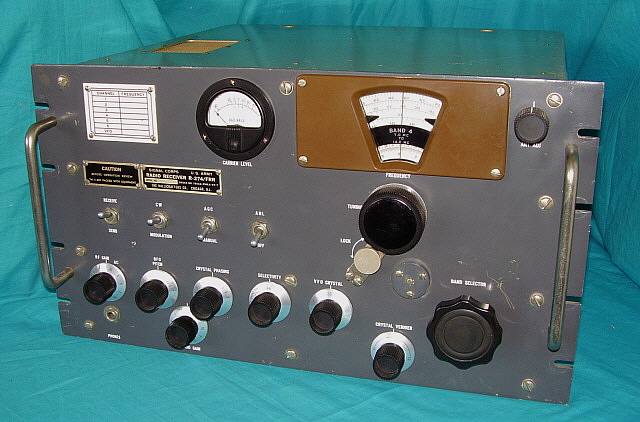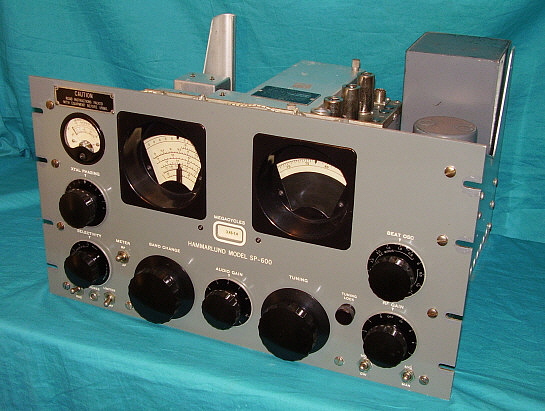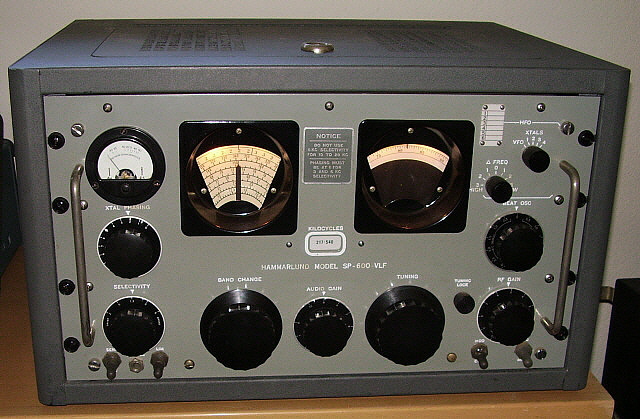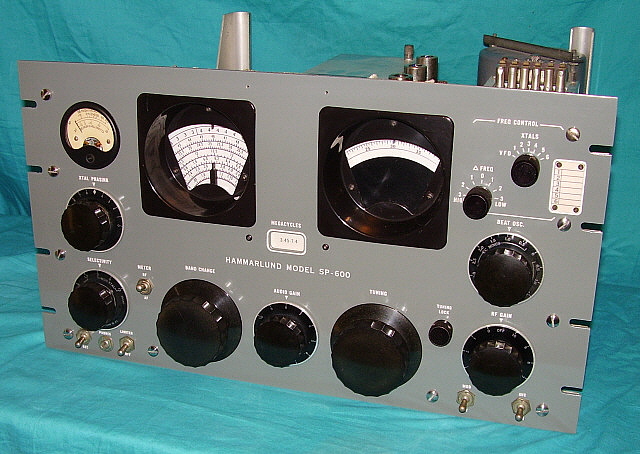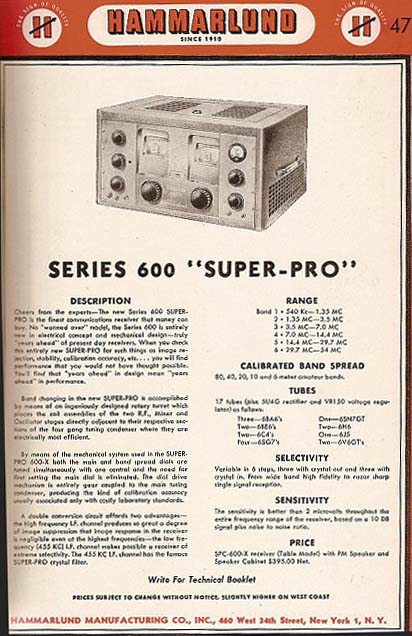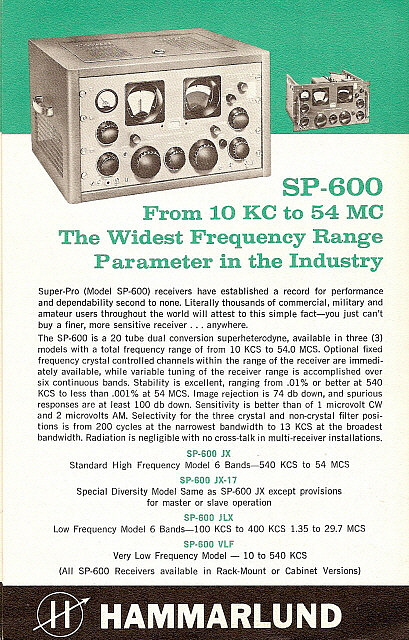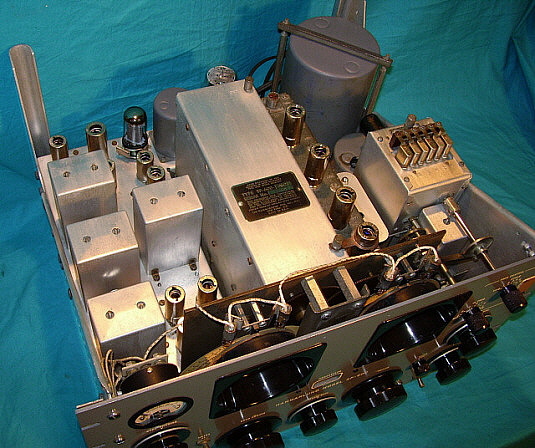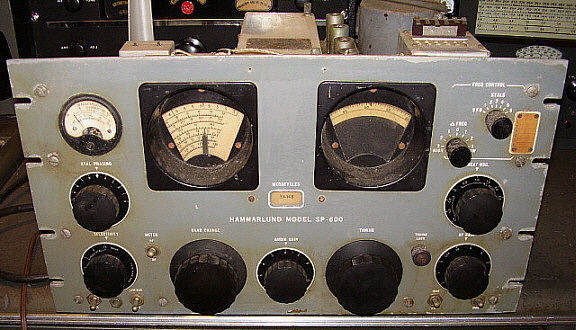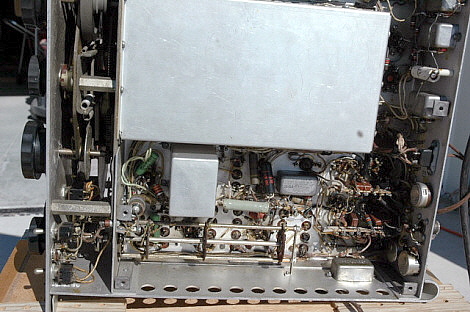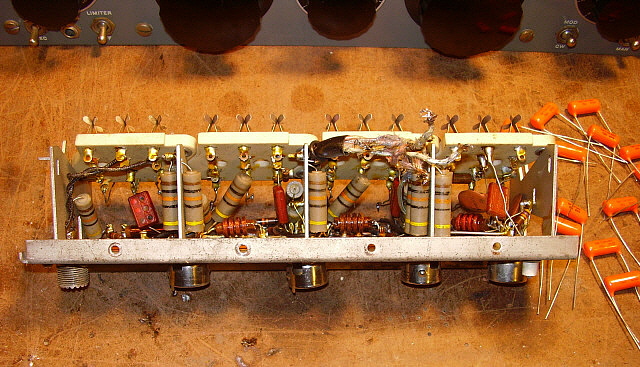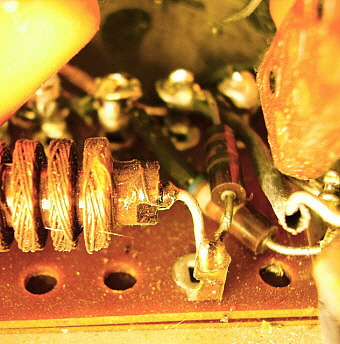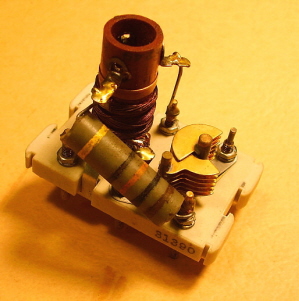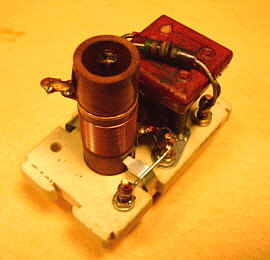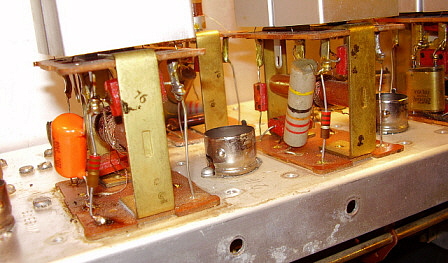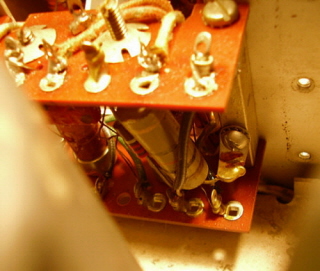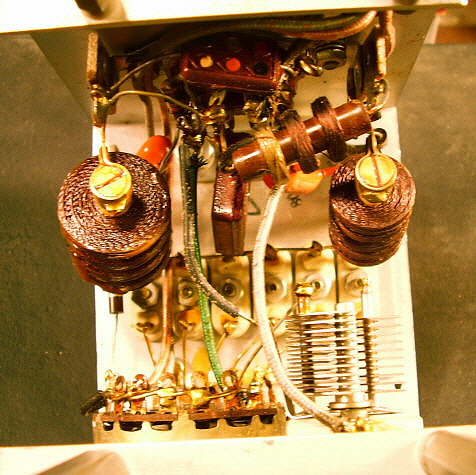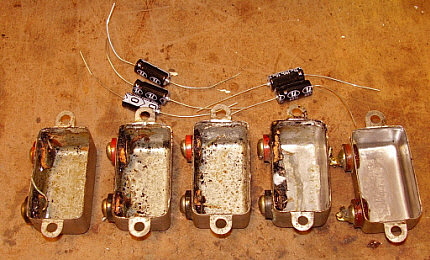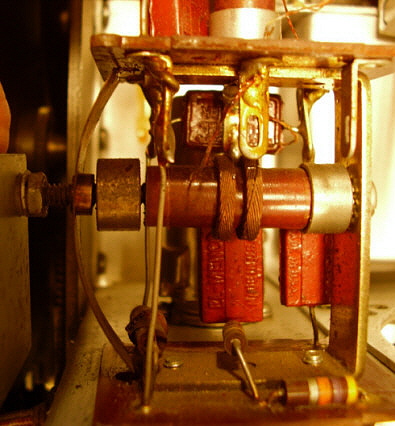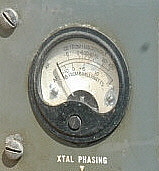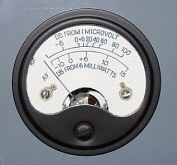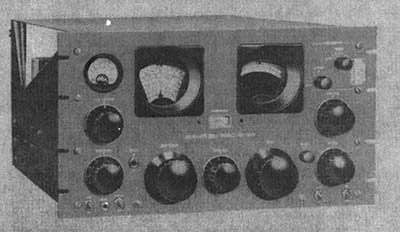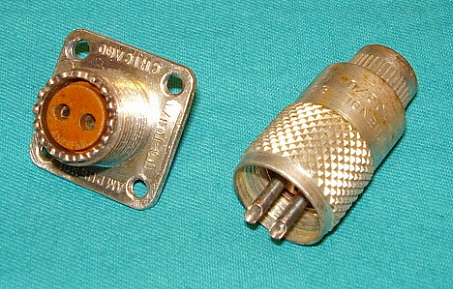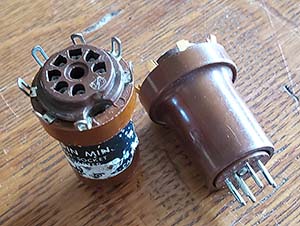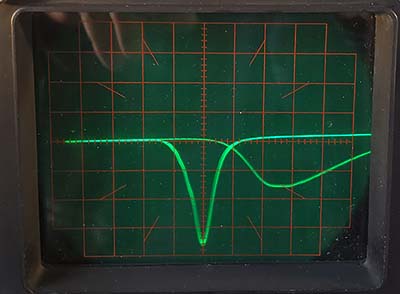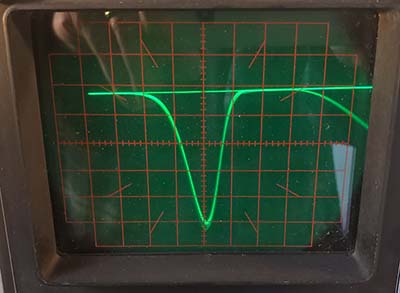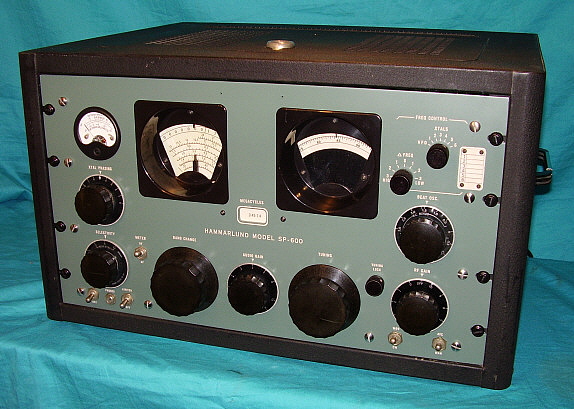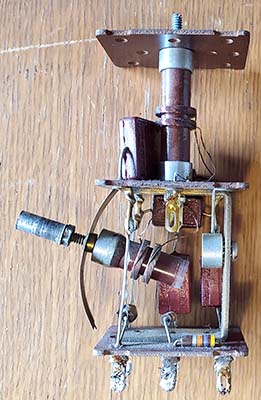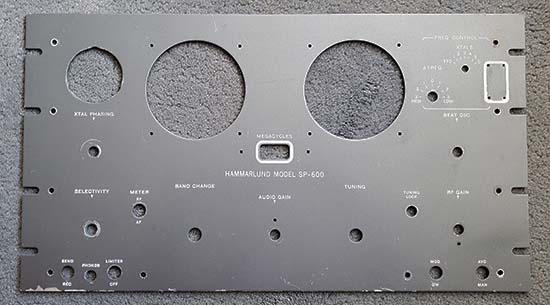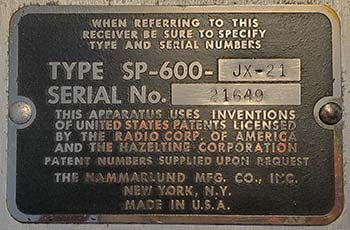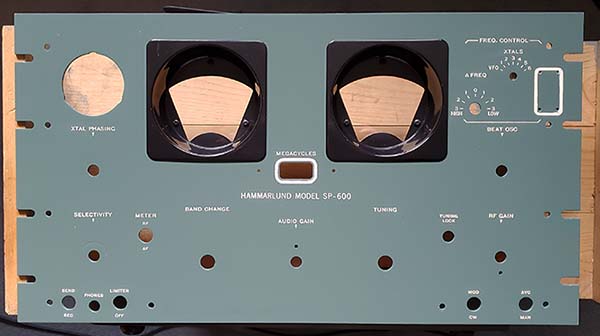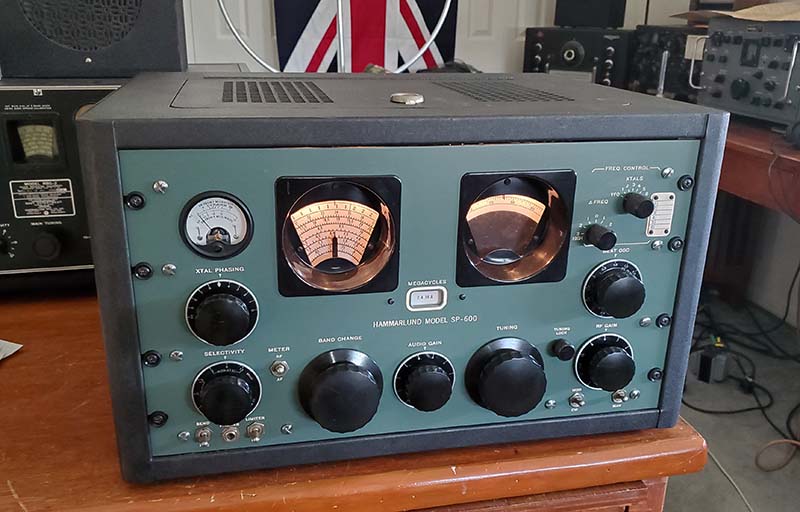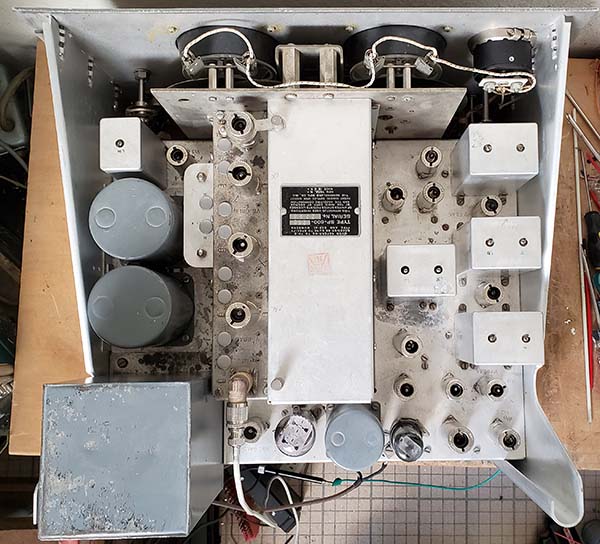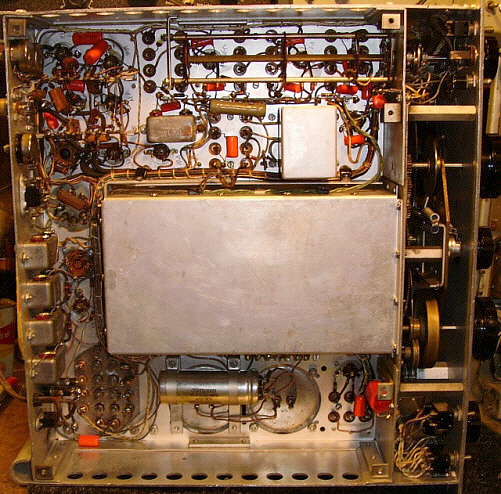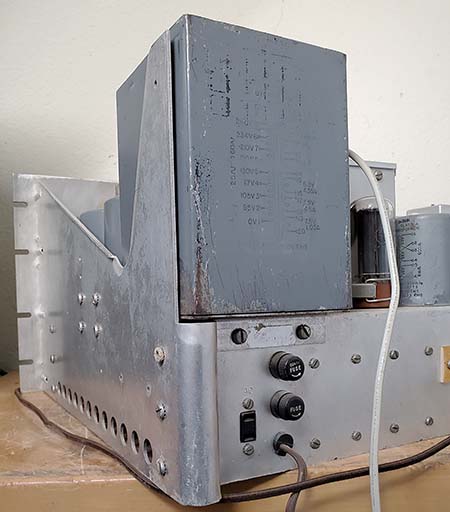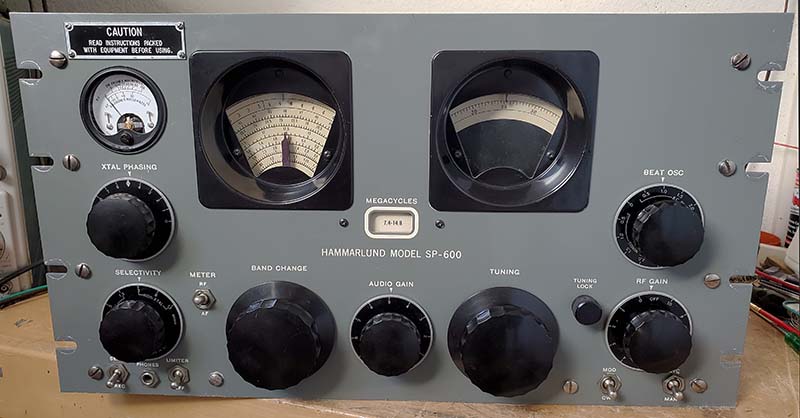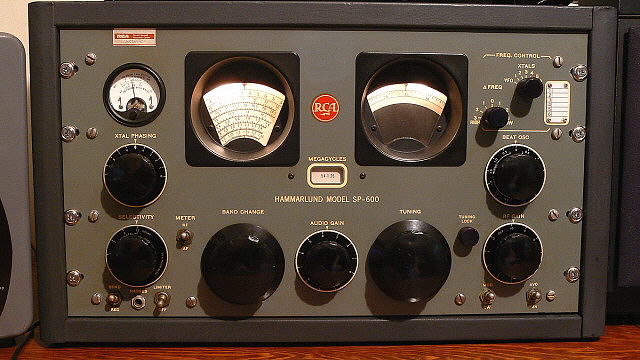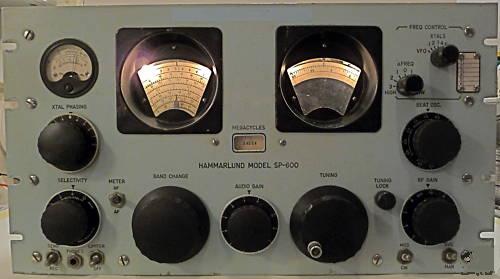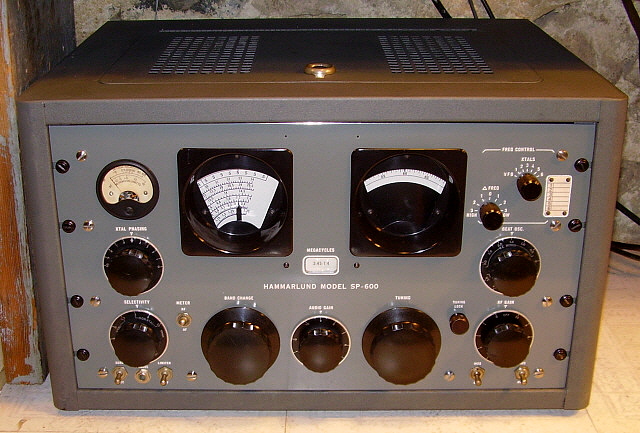| The SP-600's ability to perform well as a vintage ham
receiver is really a subjective judgment of the ham operator. The SP-600
is rarely encountered as "THE ham station receiver" and most
of the time, if it's even present in a vintage ham station, it will be
in the background, maybe installed in a rack of seldom used equipment.
When everything is working correctly on a SP-600, it's an impressive
performer and would a very usable receiver that would be a pleasure to
operate. So, why isn't it a popular choice for the vintage station receiver? Hmmm,...a
good question. Here are the SP-600's
good points,...and a few of the not-so-good points.
Sensitivity - The SP-600
can be a very sensitive receiver. It's specs were 2uv in AM and 0.75uv
in CW for a signal to noise ratio of 10db. It's sensitivity above 20mc
all the way up to 50mc is impressive, especially for a receiver that was
designed in the post-WWII, late-forties era. To achieve the rated
sensitivity however, the receiver will require a full rebuild, NOS or
equivalent tubes and MOST IMPORTANTLY,...an accurate IF/RF alignment
using laboratory-quality equipment. Additionally, a resonant or matched
antenna for the tuned frequency is necessary to achieve the highest
level of sensitivity. When these criteria are met, the SP-600 will hear
just about anything on the air, with propagation conditions, QRM or QRN
being the only limitations.
Selectivity - The selectivity is very good at the 3kc position for SSB and CW
signals. AM signals can have the bandwidth expanded to 8kc and if the
station is very strong, try 13kc for the ultimate in wide bandwidth
audio response. I find that the 3kc bandwidth is actually good for
strong AM signals since the upper audio frequency attenuation tends to
enhance the bass response a little resulting in a mellow sounding audio.
A sweep IF alignment will really help in getting the proper relationship
between the 3kc, 8kc and 13kc bandwidths. With a sweep IF alignment,
strong AM stations sound very nice in the 13kc bandwidth.
The Crystal Filter has it critics but I find that it
works very well on CW but even SSB or AM can benefit from its use when
adjacent frequency interference is a problem. Accurate alignment of the
crystal filter is crucial for its proper operation and the
correct alignment depends on accurately setting the PHASING knob to
agree with the dual-stator/single rotor PHASING condenser. When set up
correctly with a full IF alignment, the Crystal Filter works just like
one would expect. The <> is the maximum selectivity and heterodyne
action takes place around and near the <>.
Dial Resolution Vagueness and Rapid
Tuning
- Many users feel that the tuning dial's
vague readout accuracy is the main disadvantage to using the
SP-600 receiver and
generally you'll find these critics comparing the SP-600 to the R-390A.
These two receiver's utilize design approaches that couldn't be more
diverse - not to mention that the R-390A cost was at least two and a
half times
that of the SP-600. The SP-600 covers large slices of the spectrum in
each tuning range. You just couldn't get one kilocycle accuracy when
each tuning range covered several megacycles using a variable-C type of
tuning. Collins utilized a
precision PTO (permeability-tuned oscillator) with a tuning range of just 1000kc in ten turns. That was mixed with a
multiple-crystal-controlled oscillator and variably tuned IFs that resulted in double or
triple conversion and 1kc or better tuning accuracy. It
was expensive to build the R-390A and it could be difficult to maintain. The SP-600
was easy to maintain, although parts of it are difficult to disassemble,
it's easy to work on (sort of) and, when in use, it allowed rapid coverage of wide areas of the spectrum
- something necessary for certain kinds of surveillance. This rapid
tuning though does make tuning in some stations difficult, especially at
the higher frequencies. The
logging scale was provided to allow a means of accurate resetability and
its use will really help in finding net frequencies for monitoring. Once
you've found the net, make a note of the logging scale reading and
you'll always be able to retune right to the correct frequency.
Drifting - What can you expect from Hammarlund? The
typical SP-600 doesn't drift excessively after a 30 minute warm-up
(it might never stop drifting but it's a minimal drift after 30 minutes.) As
mentioned elsewhere, the Crystal Controlled Switchable Oscillator - the
"X" option - is rarely used. It requires specific crystals for the
desired tuned frequency and then you still have to tune the receiver to
the desired frequency so that the RF stages and the Mixer are in tune.
Audio Reproduction -
Another often heard complaint is the SP-600 audio. An individual's
impression of the SP-600's audio quality is obviously a subjective
judgment. Some users find the audio to be standard "communications
grade" with limited bass response while others listeners find
the audio to sound "high fidelity." The stock bass response is rolled
off so that the -3db point is at about 125hz resulting in a moderate
bass at best. Use 3kc bandwidth for upper audio attenuation to enhance
the bass somewhat. Be sure to match the 600 ohm output for the best
audio reproduction and use a large speaker in a good enclosure. The
audio has a lot of highs when the bandwidth is in the 13kc position and
this tends to really de-emphasize the bass response but again, it
depends on the loudspeaker being used. A lot of the listening experience is dependent on the
loudspeaker location. If the loudspeaker is directly in front of you and
only about two feet away you'll be hearing the high frequency audio
overpowering the bass response. Try locating the loudspeaker about ten
feet away. It will require the AF Gain to be somewhat higher but the
loudspeaker's distance tends to roll-off the audio highs and, since low
frequency audio has more power, the bass response is improved. The
advanced AF Gain also tends to improve bass response.
SSB Reception Issues -
The calibrated BFO can be very accurate and very handy for
SSB. You do have the capability of selecting upper or lower sideband by
which side of "0" you set the BFO. BFO-drift is just about
non-existent after about a 30 minute warm-up. To set the BFO to the correct sideband,
first set the BFO to "0" and then tune in the SSB station to "zero beat" or where the audio sounds
"muffled and bassy" - then, by adjusting just the BFO to one side or the
other of "0," the audio will clear up and sound normal. Whichever side
that is will be the correct setting for whatever sideband that station
is using and more than likely for all the SSB ham stations on that
particular band. The SP-600 will provide excellent SSB audio. And you
don't need a Product Detector or a CV-591-type of external SSB IF unit
either. Good SSB demodulation requires that the detector has the proper
ratio of BFO injection to the incoming signal level. Best audio will
require that the AVC is in the OFF position and that the RF gain control
used to set the correct ratio. Turn the AF gain up to 6 or 7. Turn the
RF gain to a level where the incoming received background noise is
moderate - usually about 7 or 8. Selectivity should be on 3kc. With an SSB
be signal tuned in, reduce the RF gain if the audio sounds distorted.
At the proper RF gain setting, SSB signals sound fine on the SP-600.
The disadvantage is that every signal has a different strength and the RF
gain usually has to be adjusted each time. With "one on one" QSOs,
it's usually not a problem but Net Operations, with many different
stations "checking in," can be somewhat frustrating. You can operate
with the AVC on to limit the maximum sensitivity (with the RF gain set
to about 7) but strong SSB stations might still distort. Most
versions of the SP-600 provide an adjustable BFO Injection adjustment
located on the rear apron of the receiver. Be aware that when the BFO
Injection is adjusted to maximum, the BFO Buffer tube's cathode is
grounded and the tube will tend to run somewhat hotter than usual. If
the BFO output is typical for a good condition SP-600, ample BFO
injection for SSB will be with the Injection set to about 50%. A very low-level
of BFO injection was provided for CW signals and prevented "masking" of
very weak CW signals.
Fixed Antenna Input Impedance
- By using the ham station antenna you will be providing
the SP-600 with a matched antenna that will allow it to perform at its
best. Many casual listeners using unmatched end-fed wires may be
disappointed at the SP-600s performance, especially when considering the
high noise levels experienced with end-fed wires. The SP-600 was
designed to operate with a matched antenna and this set up will give the
best performance results. There isn't any sort of Antenna Trimmer
control provided because Hammarlund expected the end-user to provide a
matched antenna (dipole usually) with approximately 100 ohms impedance (50Z or 75Z will
also work
fine.)
Remote Standby Relay - Most SP-600 versions will have a RELAY
socket that looks like an AC receptacle. This parallels the SEND-REC
switch and allows the receiver to be put into stand-by remotely. This
can be done with the auxiliary contacts on a Dow-Key type relay and it
makes using the SP-600 as the station receiver very practical. Be sure
to leave the SEND-REC switch in the SEND position when using the remote
stand-by function. An exception to this RELAY socket is the popular
SP-600 JX-17, which, since it was for diversity reception, does not
include a remote standby option.
|
